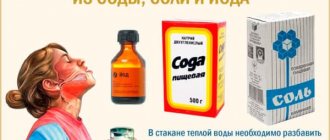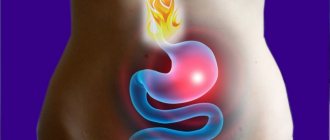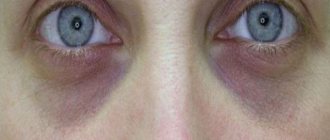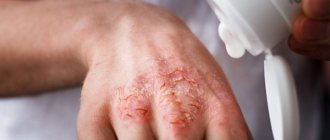03/30/2019 Alena Masheva Health
Every person should know how angina manifests itself. This disease, known as acute tonsillitis, is characterized by acute inflammation of the lymphatic pharyngeal ring. As a rule, it does not have serious consequences - many have suffered from it. However, there may be complications if it is not treated on time.
Therefore, now it is worth talking about the symptoms of this disease, the causes of its occurrence, the principles of treatment and other features related to this topic.
Causes and source of infection
The most dangerous forms of sore throat are staphylococcal or streptococcal. They occur when dangerous bacteria enter the body:
- staphylococci;
- streptococci.
Most often, infection occurs through airborne droplets or through household contact with a person with tonsillitis. You can become infected through shared utensils or household items (shared towels, bath accessories, dishes, etc.). Not everyone knows that healthy sore throat pathogens can “live” in the body of a recovered person for another 14–18 days, and such people can also be a carrier of the disease.
The mucous membrane of the nasopharynx is the first barrier to pathogenic microbes. And it depends on how strong this local immunity is whether a person gets sick after contact with pathogenic bacteria or not.
Usually staphylococci or streptococci get on the tonsils, and it is the local immune system that begins to fight them, producing antibodies to these microbes. But the main peak of such diseases occurs in autumn or spring, when the weather is unstable, people can become hypothermic or come into contact with sick people and get sick, since their body is weakened by a lack of vitamins.
Diagnostics
Having noticed the first signs of a sore throat, you should immediately consult a therapist. It is he who makes the diagnosis by analyzing the picture of the disease during a visual examination. If necessary, cytological, serological and bacteriological studies are prescribed.
A much more detailed diagnosis is prescribed in the case of an aggressive course of the disease. Because complications arise, and their treatment requires a more responsible approach. In this case, the following diagnostic measures are prescribed:
Often these studies help determine an increase in the titer of antibodies to streptococcal antigens and toxins, identify the presence of cardiac complications and valve defects, or autoimmune joint damage. All this often becomes the consequences of advanced sore throat and, in turn, is also fraught with serious disorders in the body.
Symptoms of sore throat in an adult
The main signs of tonsillitis are as follows:
- severe pain in the throat, especially when swallowing;
- headache, loss of appetite;
- characteristic pain in the abdomen, gag reflex;
- severe increase in temperature (above 38);
- the occurrence of pain when swallowing with the simultaneous occurrence of fever;
- enlarged lymph nodes, although there are no signs of pathogenic microbes entering the bronchi or lungs;
- enlarged lymph nodes with symptoms of pathogenic microbes;
- stuffy nose, presence of rhinitis;
- the appearance of an unpleasant “aroma” from the oral cavity.
A sore throat in an adult can begin due to the fact that he eats incorrectly or at the wrong time, or for some reason there is a failure of the immune system. Proper treatment of sore throat must begin when the first symptoms of this disease appear in a person. There are also particularly dangerous symptoms of tonsillitis:
- it becomes difficult to breathe;
- swelling of the tongue and cervical regions occurs;
- rash of unknown origin on the skin of the face and body;
- hardness of the neck muscles;
- difficult to open your mouth.
For various forms of tonsillitis (especially with high fever), only a doctor can prescribe medications that an adult needs to take for sore throat.
Characteristic manifestations of sore throat
The first signs of a sore throat that a person feels are a sore throat, sore throat, dry cough and general malaise.
The temperature may rise, in some cases slightly, and sometimes symptoms of intoxication appear immediately.
What signs are characteristic of the most common types of tonsillitis are described below.
Viral sore throat
The disease has a certain seasonality, since it appears more often in spring and autumn, during the weakening of the body’s immune forces and vitamin deficiency.
Viruses are transmitted by airborne droplets; the risk group includes people working in close quarters with large crowds of people.
There is also a danger of catching an infection from an already ill patient. Infection is caused by herpes virus, rhinovirus, adenovirus.
The symptoms of all ENT diseases of viral etiology increase rapidly, within 3-5 hours.
The following manifestations are distinguished:
- acute pain and redness of the mucous membrane in the area of the tonsils and soft palate;
- enlargement of neighboring lymph nodes;
- headaches and joint pain;
- irritability, drowsiness, weakness;
- stomach upsets – nausea, diarrhea, vomiting;
- hoarseness of voice;
- runny nose and dry cough;
- temperature rise to 38.5°C.
Viral tonsillitis requires specific treatment, since it affects the cardiovascular system and leads to a persistent decrease in immunity. Without adequate therapy, the infection spreads expansively to the ears, nasopharynx, and lungs.
Bacterial sore throat
Bacterial tonsillitis occurs as a result of damage to the mucous membranes of the larynx by streptococcus, pneumococcus, Escherichia coli and Pseudomonas aeruginosa, Staphylococcus aureus and, less commonly, pathogens.
You can also get sick if there is a sharp decrease in immunity, especially after contact with an infected person, hypothermia and injury to the tonsils.
The first sign of a bacterial sore throat is a dull pain in the throat, which is accompanied by weakness, increased fatigue, and signs of general intoxication (headaches and joint pains, vomiting, nausea).
All symptoms develop smoothly, progressively, over 2-4 days. The temperature can reach 38-40°C, depending on the form of the disease (they will be discussed later). The tonsils become covered with necrotic plaque of different colors, from white-gray to yellow, and increase in size.
Against this background, it becomes difficult for the patient to swallow and talk, and the pain syndrome can reach such an intensity that it makes it difficult even to swallow saliva.
Often, a bacterial throat infection leads to serious consequences in the form of a retropharyngeal abscess, and therefore requires timely diagnosis and treatment.
Signs of fungal tonsillitis
It develops as a result of damage to the mucous epithelium of the oral cavity and throat by a yeast-like fungus of the genus Candida.
Infection occurs in patients with weakened immune systems, against the background of long-term antibiotic therapy and severe vitamin deficiency.
The first symptoms of candidal tonsillitis may go unnoticed, since the patient’s general condition remains virtually unchanged, and the sore throat is insignificant or absent.
The adjacent lymph nodes are slightly enlarged in size, but are painless on palpation, the temperature remains within normal limits or rises to subfebrile levels (less than 38°C).
Then the patient begins to notice on the surface of the tonsils, and often the cheeks and tongue, dotted white deposits of a cheesy consistency. They have the shape of islands, occupying an increasingly larger area.
Later, pronounced symptoms appear:
- sore and sore throat;
- discomfort when swallowing food, water and saliva;
- the appearance of bad breath;
- atrophy of taste sensations (they may weaken or disappear completely).
It is difficult to remove the cheesy film from the tonsils mechanically, and after its removal a layer of hyperemic, irritated mucous epithelium is visible.
Fungal tonsillitis often occurs as a secondary disease against the background of a viral infection or bacterial pathology, which is treated with a large number of antibiotics.
Treatment of sore throat in adults
Only an ENT specialist can tell you how to treat a sore throat quickly and effectively using medications at home. It is he who will prescribe effective antibiotics and other medications that are necessary to cure a sore throat and eliminate the symptoms of this disease.
Even before the doctor arrives at home, the patient should, if possible, be placed on bed rest, and should be placed in a separate room. A person with tonsillitis is given separate dishes, a towel and other individual household items. The room in which the patient lies is ventilated several times a day, the floor should be washed with chloramine at least once a day.
The following recommendations will help reduce pain and speed up the healing process at home:
- Drink more warm liquids. The measure will prevent dehydration and make swallowing easier.
- Protect your voice. It is recommended to talk (especially in a raised voice) as little as possible. It is best to maintain complete silence until recovery.
- Take lozenges against a sore throat.
- Drink tea with honey and lemon. The drink will strengthen the immune system, help destroy germs and relieve pain. It is important that the temperature is comfortable for reception.
- Gargle with a solution of salt or soda whenever possible.
- Systematically humidify the air in the room. A measure to reduce irritation of mucous membranes.
It is not advisable to carry any type of sore throat on your feet. And with staphylococcal or streptococcal forms, bed rest is required for the first 5–6 days (and in severe cases, more than 10 days). Most often, it is not possible to quickly cure a sore throat in an adult. For purulent forms of the disease, antibiotics are prescribed.
Prevention at home for adults and children: what to do to avoid getting infected or getting a sore throat
Prevention is the most effective method of combating any disease. It is easier to prevent infection from entering the body than to expel it from there. In order to minimize the risk of getting a sore throat, follow some rules.
- Proper nutrition . The diet should be enriched with vitamins. Particular attention should be paid to groups B and C. Also, nutrition should be correct in terms of balance. It is advisable to receive daily norms of all elements necessary for the body. Eating late, overeating or undereating will also weaken the body.
- Sports activities . This point will be especially relevant for older people, office workers and workers in similar quiet professions. Exercise will strengthen the heart and blood vessels, improve blood flow, which will more effectively remove waste and toxins from the body, preventing them from reducing immunity. It’s worth accepting this fact and starting doing exercises so that you don’t take pills again later.
- Visiting a sanatorium, relaxing at resorts . Such a vacation will relieve the body not so much physically, but psychologically. Clean air, water, absence of city bustle - people accustomed to all this do not notice the negative consequences, but once you try, it will become clear how exhausted the body is.
- Rejection of bad habits . Particular attention is paid to smoking. It affects the throat - the main target of sore throat.
- Prevention with lemon and ginger . Regular consumption of these products 2 times a week will help strengthen your overall immunity.
- Elimination of chronic diseases of the nasopharynx . This includes rhinitis and sinusitis. Often, due attention is not paid to the need to treat such diseases; they do not particularly manifest themselves. But because of them, the immune system is greatly weakened, because it is inflammation that becomes the source of infection.
There is a widespread belief online that a protein-free diet will also help strengthen the immune system. This absolutely cannot be believed. Protein is a building material for the body. It nourishes muscles, ligaments, tendons, and participates in the formation and renewal of tissues. Such a restriction will only weaken the body, and in especially severe cases can lead to diseases other than sore throat.
Drugs for quick and effective treatment of sore throat
Before treating a sore throat in an adult, its cause should be clarified. Only after a visual examination, palpation of the lymph nodes and pharyngoscopy will the doctor be able to prescribe specific therapy, consisting of local and systemic antibacterial drugs.
First of all, antibiotics are used to quickly and effectively eliminate the symptoms of tonsillitis. In addition to them, local drugs must be used, which also effectively destroy the pathogen.
In addition to antibacterial drugs, the treatment regimen includes immunostimulating and antipyretic drugs, which quickly reduce the symptoms.
What antibiotics are prescribed for treatment in adults?
When prescribing medications for sore throats to adults, doctors most often prescribe penicillin antibiotics:
- Sumamed;
- Oxacillin;
- Amoxicillin Sandoz;
- Ampicillin trihydrate;
- Phenoxymethylpenicillin;
- Amoxiclav.
These drugs act directly on the cause of the disease. The course of treatment usually lasts 5-7 days, but in difficult cases it can be extended to 10-12 days. If a sore throat occurs with complications, the patient is most often sent to a hospital, where treatment with broader-spectrum antibiotics is prescribed: Cefuroxime, Levofloxacin, Ceftazidime, Ceftriaxone. If after seven days there is no obvious improvement, it is necessary to recheck the diagnosis or prescribe another drug.
Among the local drugs that have a detrimental effect on the pathogen are:
- lozenges - Septolete, Stop-Angin, Faringosept, Strepsils;
- sprays with antibiotics or sulfonamides - Bioparox, Hexoral, Kameton, Ingalipt.
In case of mild sore throat, the antibiotic Bioparox can replace systemic medications, since it is both an antibiotic and a local drug at the same time.
As practice has shown, it is almost impossible to cure inflammation of the tonsils without the use of antibiotics. The most reliable and fastest-acting method is intramuscular administration of drugs. Injections are given to patients who have contraindications to oral administration of antibacterial agents or who have developed serious complications.
It is not recommended to prescribe antibiotics on your own. Only a doctor can choose what to drink for an adult with a sore throat.
Types of sore throat
Depending on the causative agent of the infection, it is divided into several types; the type of disease primarily determines how to determine it in the future. There are two main types of infection based on the type of pathogen:
Viral tonsillitis. The source of infection can be various viruses, usually of a cold nature. The main cause of the disease for preschool children under 5-6 years of age.
The disease is accompanied by side symptoms such as runny nose, sneezing, stuffy nose, and viral tonsillitis can cause nausea and vomiting.
Viral sore throat is often a side effect of infection with the influenza virus or cold viruses. This type of tonsillitis usually occurs easily and without complications.
With timely treatment, viral inflammation of the tonsils completely disappears in one to two weeks. For viral inflammation, as a rule, antibiotics are not prescribed due to their ineffectiveness; antipyretics and antiviral medications are usually prescribed.
The set of symptoms for viral tonsillitis depends on the type of virus that causes the disease (usually the same as those of the corresponding disease). There are no specific additional symptoms for viral tonsillitis, but the disease can be identified by small red blisters on the patient’s tonsils.
Bacterial (streptococcal) tonsillitis. The source of the disease is streptococcus bacteria. Usually a source of illness for school-age children. Sore throat caused by streptococci develops more rapidly and is much more severe than collateral viral inflammation.
With a bacterial infection, there are almost no symptoms inherent in a common cold, but the course of the disease can be accompanied by an extremely high temperature (up to 40 C).
Bacterial tonsillitis, unlike viral tonsillitis, can cause various complications, including rheumatism, otitis media, problems with the cardiovascular system, liver or kidneys. The disease may develop and the formation of purulent plaque on the tonsils (so-called follicular tonsillitis).
With streptococcal tonsillitis, there is a risk of the disease progressing to the chronic stage; to prevent this, you need to complete the course of treatment and make sure that the patient is truly completely cured.
To treat the bacterial species, antibiotics are used; at high temperatures, I actively use various antipyretics (ibuprofen, paracetamol and others).
Symptoms that indicate infection with bacterial tonsillitis:
- A large number of white bubbles on the tonsils and on the back palate;
- The presence of a gray coating on the tongue;
- Enlarged lymph nodes;
- Inflamed tongue.
It should be remembered that the type of sore throat in a child can be determined as accurately as possible only through clinical studies (streptococcal throat swab test).
Probiotics
Probiotics are prescribed in combination with antibiotic drugs to replenish the beneficial microflora of the body that suffers from them. The most famous and popular of them are:
- Mixilac;
- Bifiform;
- Linux;
- Hilak forte.
They have proven to be highly effective and easily digestible by the body of any age. Their main difference from classical probiotics is that they combine not only the bacterial culture itself, but also components that create a favorable environment for the comfortable settlement and activity of beneficial bacteria in the human intestine. thus, the risk of the body rejecting artificially produced bacteria is significantly reduced.
Causes
Hyperthermia during tonsillitis is a natural protective reaction of the body that accompanies any inflammatory process. With tonsillitis, pathogenic bacteria multiply on the tonsils, and the process of suppuration often begins. It indicates that leukocytes are fighting infection and is accompanied by an increase in local and general temperature. Artificial hypothermia (lower temperature) with the help of antipyretic drugs can slow down the course of the inflammatory process, that is, increase the time the body fights infection.
What medications besides antibiotics help in treatment?
Treatment of tonsillitis should be comprehensive. The prescription of additional drugs depends on the form and severity of the disease, the type of pathogen and the presence of allergic reactions to the components of a particular medicine.
In general cases, the treatment regimen for angina includes the following groups of medications:
- solutions for lubricating the pharynx: Lugol, Iodinol, Vokadin;
- gargling liquids: Chlorhexidine, Furacilin, Romazulan;
- antipyretic drugs based on paracetamol: Ibuklin, Tylenol, Theraflu, Panoxen, Coldrex, Panadol, Rinza, Coldact;
- antihistamines: Suprastin, Diazolin, Diphenhydramine, Claritin, Fenistil;
- antifungal drugs: Fluconazole, Ketoconazole, Flucostat, Nystatin, Levorin;
- immunostimulants: Imudon, IRS-19, Anaferon, Methyluracil (tablets).
Many of these drugs contain an analgesic component, so they not only have a detrimental effect on the cause of the disease, but also relieve pain in the throat.
How is purulent sore throat treated?
Unlike other tonsillitis, the purulent form is always acute. For treatment, penicillin antibiotics or drugs from the macrolide group must be used:
- Erythromycin;
- Azithromycin;
- Spiramycin.
To reduce the symptoms of sore throat, corticosteroids, Ibuprofen and Paracetamol are prescribed, gargling and compresses are used, and lubricating the throat.
Comments (8)
Valeria
10/29/2018 at 00:31 |
Taking probiotics when taking antibiotics is a necessity, not a fad, so don't try to save your money by doing so. Antibiotics make my stomach hurt a lot.Answer
Expert Marina Rusetskaya
02/05/2019 at 18:25 |
Valeria, and not only the stomach. When taking antibiotics, not only pathogenic microflora is destroyed, but also beneficial ones.
Clinically, this is manifested by diarrhea, constipation, bloating, an unpleasant taste in the mouth and other symptoms. Therefore, it is really necessary to restore the dead normal intestinal microflora.
The easiest way is not to take probiotics (medicines), but to buy regular kefir, yogurt or sourdough in the nearest store. Just don't buy kefir product. Read the CFU/L content on the package. The normal content of bifidobacteria in fermented milk products is 1*107. This number of microorganisms is enough to restore proper intestinal function.
In the first days of taking kefir, you may have loose, infrequent stools - this is normal. But if complaints persist for 4 or more days, it is better to consult a doctor.
Answer
Mironova E.
02/05/2019 at 10:49 |
I usually lower the temperature if it’s already 38 or more. Drink a lot - tea with raspberries, lemon, milk with honey. If possible, gargle with chamomile. In general, of course, you can’t do without antibiotics for a sore throat. The best way to treat a sore throat is with Dorithricin. I cured my throat in 3 days. On the second day of use I was able to eat without effort.
Answer
Valeria
02/06/2019 at 18:31 |
Good result 3 days. What kind of drug is it anyway? What is it produced in?
Answer
Expert Marina Rusetskaya
02/07/2019 at 00:09 |
Valeria, it is better to consult your doctor about the drug. There is a concept called “empirical therapy.” This is a treatment based on practical experience and the most likely sensitivity of microorganisms to antibiotics at the moment in a particular clinic.
If Dorithricin is suitable for someone in St. Petersburg, it does not mean that it will suit you in Khabarovsk, for example. The doctor prescribes an initial course of treatment based on the patient’s medical history, the presence of allergic reactions to drugs, and an analysis of the type and sensitivity of pathogenic bacteria to antibiotics.
In order to make the necessary correction of therapy, a throat smear examination is prescribed. The laboratory determines which type of streptococcus caused the sore throat and its sensitivity to antibiotics.
Keep in mind that microorganisms constantly adapt to antibiotics and develop resistance factors (resistance), so treatment becomes ineffective. A drug that worked well 5 months ago may no longer be useful today.
In addition, self-administration of antibiotics and early cessation of treatment can lead to unwanted complications.
Answer
Expert Marina Rusetskaya
02/06/2019 at 23:53 |
You are right that there is no way to treat a sore throat without antibiotics, but Dorithricin may not be suitable for all patients. First, there is bacterial resistance to antibiotics. Secondly, no one has canceled an allergic reaction to drugs.
According to recent studies, Macropen and its analogues are prescribed. Regarding gargling, chamomile is good. But not only chamomile helps, there are many other solutions that work effectively. For example, soda solution, furacillin, calendula, etc. The main thing when rinsing is the frequency of the procedure (at least 1 time per hour).
Warm drinking is an excellent remedy; warmed milk with honey helps especially well, because... droplets of fat from milk envelop the affected mucous membrane and warm it, stimulating local blood circulation.
The duration of hyperthermia for angina depends on the severity of the disease, the effectiveness of the antibiotic and the complications that have developed (if any). For some, like you, the body temperature normalizes within a day from the onset of the disease, while others “get” a paratonsillar abscess, pyelonephritis or endocarditis. In these cases, hyperthermia lasts from several days to several weeks.
Answer
Anastasia
02/18/2019 at 01:47 pm |
Hello, please tell me, on the first day a lump came out on my cheek, we thought it was a cyst, we went to the dentist, it turned out that it was an inflamed lymph node, then in the evening the temperature began to rise, it was 38, the next morning the lymph nodes on my neck became inflamed, in the morning the temperature was 39, they called a doctor, diagnosed an acute respiratory infection, I got sick on Wednesday, and since Wednesday my temperature has been 38 or 39, we’ll take an antipyretic, it goes down to 37, then again, yesterday they called an ambulance and they said it’s a sore throat, they prescribed antibiotics to take, today it was in the morning the temperature was 39, they called the doctor to the house again, she also diagnosed a sore throat and told me to donate blood. This is the first time this has happened to me, I’m 15 years old. Tell me, what is this???????
Answer
Expert Marina Rusetskaya
02/18/2019 at 23:48 |
Anastasia, such an onset and persistent hyperthermia, which is not relieved by anything, can really be a sign of angina.
You should visit an ENT doctor, the doctor will help you understand the situation. If there are pustules (rashes, films or ulcers) on the tonsils, this is a sore throat.
Enlargement and inflammation of the lymph nodes can be a manifestation of any infection. You need to gargle with a warm soda solution (put a teaspoon of soda on a mug of boiled water). Perform the procedure every hour during the day, at night as needed. The solution will mechanically remove bacteria, their waste products and food residues. Eat food even if you have no appetite (preferably pureed food). After each meal, gargle. Drink more fluids to detoxify your body.
Painkillers and warm milk with honey will help ease the pain of grief. Milk contains fat, which settles on the mucous membrane of the tonsils and warms it, local blood flow is activated, and inflammation goes away faster.
You need to take an antibiotic, but a doctor should prescribe it for you after an examination, taking into account your individual allergic reaction and your history of taking medications throughout your life. Most often, if there are no problems, Doxycycline is prescribed 1 tablet 2 times a day.
Antibacterial therapy should be carried out in full, even if you feel healthy after 2-3 days. The meaning of full treatment is to prevent long-term complications of angina. To do this, injections of long-acting penicillin (bicillin) are prescribed for six months.
Answer
Folk remedies for treating sore throat
How to treat a sore throat at home? Traditional methods are used as part of complex treatment of the disease in addition to drug therapy. With the help of folk remedies, you can somewhat reduce pain, relieve inflammation and alleviate other symptoms of the disease.
To treat sore throat, you can use honey or propolis. These agents have anti-inflammatory and antibacterial effects. In complex therapy of the disease the following is used:
- Propolis. Propolis helps well with throat diseases. It needs to be chewed after eating, or you can prepare a tincture. Take 100 ml of alcohol and mix with 2 tbsp. l. propolis. Hide in a dark, cool place and leave for 7-10 days. Lubricate the sore areas in the throat.
- Beet. Take red beets and grate them. Pour boiling water over it in a 1:1 ratio. Leave the mixture for 6 hours. Gargle with this solution every 2 hours.
- Elecampane. This plant perfectly helps with sore throat, even with loss of voice. The infusion is prepared as follows: pour 50 g of elecampane into 0.5 liters of vodka. Leave for 3 days. ½ teaspoon of liquid is dripped onto the tonsils. Do not drink water. Try to talk less. Repeat the procedure every hour until you feel improvement.
- Vodka compress. Vodka is considered a very effective compress. Take a piece of bandage and soak it in diluted vodka. Vodka should be at room temperature. Place the bandage on your throat, secure the bandage with cling film and a scarf. Do not remove the compress for 7 hours. For children, leave the compress for 3 hours.
- Cabbage compress. Take a cabbage leaf, cut it lightly with a knife to release the juice. Apply the leaf to the sore throat and secure. Change the compress every 2-3 hours. This method can be used for purulent sore throat, because cabbage does not have a warming effect.
If treatment for sore throat in adults is not started in time, it can become chronic, and then unpleasant symptoms will appear regularly. Tonsillitis is also dangerous because it often leads to complications in the heart, kidneys and joints. Therefore, when the first signs of the disease appear, you must seek help from an otolaryngologist.
conclusions
- Sore throat (tonsillitis of any type: streptococcal, bacterial, lacunar) may not manifest itself immediately, which increases the risk of complications.
- It can be treated at home, but only not in severe forms and under the supervision of an otolaryngologist.
- A high temperature with inflamed tonsils (the throat may begin to hurt, become swollen, painful to swallow, a lump or plug in the throat) is always present with tonsillitis.
- In order to prevent the disease from developing, it is worth resorting to first aid measures, even if there are only suspicions.
- Treatment in pregnant women differs only in less severe antibiotics.
- If you do not start treatment on time, you can get complications, the throat will not go away for a long time and nothing will help.
- The best way to prevent disease is prevention.
What to gargle with?
No less important in the treatment of sore throat is local therapy, which includes gargling. Regular procedure will not only improve the condition of the tonsils, but also allow you to recover faster. Gargling helps remove purulent plugs, relieve soreness and inflammation in the throat.
One of the popular gargles is hydrogen peroxide. To prepare, you need to dilute 1 tbsp. l. drug in a glass of water. The procedure with this solution allows you to reduce the number of harmful bacteria not only in the mouth, but throughout the body.
Also no less effective for rinsing are the following compositions:
- Furacilin, Dioxidin: dissolve 2 ampoules of one of the preparations in a glass of water and rinse;
- decoction of calendula: brew 1 tsp of boiling water in a glass. herbs and let cool to room temperature;
- chamomile decoction: brew 1 tsp with a glass of boiling water. herbs and let cool;
- baking soda-saline solution: stir ½ tsp in a glass of water. soda and salt, if you are not allergic to iodine, add 10 drops to the solution.
These components of the solutions have anti-inflammatory, analgesic and healing effects.
To achieve maximum effect, it is necessary to carry out the procedure correctly:
- For rinsing, you can use several solutions at once.
- Take liquid into mouth, rinse and spit out.
- Take another sip, tilt your head back and rinse, then spit out the solution.
- Carry out the procedure until the solution in the glass runs out.
After the procedure, you can rinse your mouth with plain water. The products must be used until symptoms disappear completely, at least 5 times a day.
Traditional medicine recipes for illness
The best traditional medicine tips for treating sore throat
Folk remedies can be used in the treatment of sore throat, but they must be combined with drug therapy.
Decoctions of the following medicinal herbs are excellent for rinsing:
- Chamomile
- Sage
- Calendula
They relieve inflammation, reduce pain and prevent the development of pathogenic microorganisms. With these infusions you can do inhalations. However, at high temperatures it is better to wait with such procedures. Kalanchoe juice is also suitable for rinsing, which should be diluted in equal proportions with warm water.
To strengthen the immune system during a sore throat, you can take decoctions of rose hips, cranberries, and lingonberries internally.
The berries of these plants also have antipyretic properties. Lemon also works well for these purposes.
You can also bring down the temperature using folk remedies. Raspberry tea (leaves or berries) is suitable for this, as it has an antipyretic effect. Warm milk with honey is also considered an effective remedy.
Sore throat is contagious or not: methods of infection and treatment
Inhalations and compresses
Methods of using compresses and inhalations effectively relieve pain and stop inflammatory processes. In practice, the following means are used:
- Wash potatoes with skins and boil. Add five drops of turpentine to the broth and breathe in the vapor for two to five minutes. Improvement occurs with regular use.
- Pour half a liter of boiling water into a container. Dissolve five drops of anise and ten drops of eucalyptus oils in water. Inhale the vapors for ten minutes.
- Peel a large onion and grate it. Fold a piece of gauze in several layers and place the product in it. Apply the compress to your neck for twenty minutes.
- Wash the head of fresh cabbage and remove the top leaves. For the juiciest ones, cut them to release the juice, apply them to the skin and wrap them with a warm scarf. It is recommended to change cabbage leaves every three hours.
- Peel a large head of garlic and add half a liter of water. Place the product on the fire until it boils, then simmer over low heat for several minutes and add half a teaspoon of baking soda. Breathe the vapors of the mixture for ten minutes.
Compresses and inhalations can be used only in the absence of elevated body temperature.
Surgical method of treatment
As a rule, conservative therapy is quite effective in the treatment of sore throat in adults. But in some cases, the doctor may recommend surgery:
- if inflammation of the tonsils develops several times a year;
- the tonsils become so enlarged that it becomes difficult to breathe;
- constant sore throats complicate the work of other organs;
- A purulent inflammation in the throat (abscess) develops.
Surgery is a last resort. Before referring the patient for surgery, the doctor will recommend laser lacutonomy (laser cauterization of tonsil lacunae). The procedure is very effective and in most cases helps to get rid of tonsillitis forever.
Clinical symptoms
Sore throat is characterized by an acute course with pronounced signs of intoxication. Fungal and viral forms of the disease are easier. The asymptomatic period lasts from 10 to 48 hours. Sore throats occur in mild, moderate and severe forms. The following symptoms are observed:
- hyperthermia;
- a sore throat;
- enlargement and redness of the tonsils;
- chills;
- muscle and joint pain;
- weakness;
- chest pain;
- malaise;
- plaque on the tonsils and tongue;
- enlarged cervical lymph nodes.
With mild frequent sore throats, the temperature is low-grade. In more severe cases it exceeds 39-40ºC. This is often observed in lacunar, follicular and necrotizing tonsillitis of bacterial etiology. Sore throat is a constant symptom. Many patients also complain of a lump in the throat.
Pain occurs as a result of a local inflammatory reaction. At the initial stage, when the sore throat is catarrhal, this symptom is mild. Pharyngoscopy reveals swelling and redness of the pharynx, palate and tonsils. The inflammatory process is local. Catarrhal sore throat does not last long. With proper treatment, symptoms subside within 1-2 days.
In advanced cases, lacunar or follicular tonsillitis occurs. With them, sharp changes in blood parameters are observed in the form of an increase in ESR and leukocytosis. On examination, swelling of the lacunae and tissue infiltration are revealed. A purulent plaque appears. There is no bleeding. The presence of festering follicles indicates follicular tonsillitis.
In severely weakened people, frequent necrotizing tonsillitis is possible. They experience nausea, vomiting and confusion. Frequent inflammation of the tonsils is possible against the background of viral diseases (influenza, ARVI, adenoviral infection). With regular sore throats, blistering rashes appear on the mucous membrane. There may be no pain. The presence of white (curdled) deposits indicates fungal tonsillitis. Often the cheeks and tongue are involved in the process.
Which remedy for sore throat helps best?
To choose the right medicine correctly, you should consider the following factors:
1. The cause of sore throat. This is the main factor influencing the choice of medication. If the causative agent of sore throat is bacteria, then the medicine must be chosen among antibiotics. The doctor must prescribe the drug, taking into account the patient’s weight, age, the presence of allergic reactions, the activity of the drug and the sensitivity of the pathogen to the drug, the patient’s tolerance, and the severity of tonsillitis. The dosage and course of administration are individual in each case.
If the causative agent is a virus, then the main drug for treatment should be an antiviral agent.
2. The severity of the sore throat. The inflammatory process has 3 stages:
- Lacunar tonsillitis is the most severe stage, in which extensive purulent formations appear on the tonsils, sometimes merging into a mesh;
- Follicular tonsillitis - many clearly defined, protruding white or yellowish pustules, the size of a millet seed, appear on the tonsils;
- Catarrhal tonsillitis - the tonsils are inflamed and red, but there is no pus.
The choice of medicine depends on the severity of the course; the more severe the inflammatory process, the stronger the medicine should be. To reduce unpleasant symptoms, it is necessary to combine the main medication with symptomatic therapy (painkillers and antipyretics).
What to do with swelling of the throat and white plaque with sore throat
The basis of treatment will be a course of antibiotics for tonsillitis. Many people stop taking medications when symptoms disappear, which is a big mistake. It is this behavior that most often leads to chronic tonsillitis. The complex must be treated with the throat using sprays and gargles. Herbal decoctions based on chamomile, calendula, sage and eucalyptus cope well with this task . Particularly severe cases are forced to use UHF therapy, but if it gets to this stage, then this is definitely not a home level of treatment. Proper nutrition will also help the body cope with the disease. The diet should be enriched with vitamins B and C and plenty of liquid.
If the inflammation is caused not by bacteria or infection, but by a virus, then there is no point in taking antibiotics.











